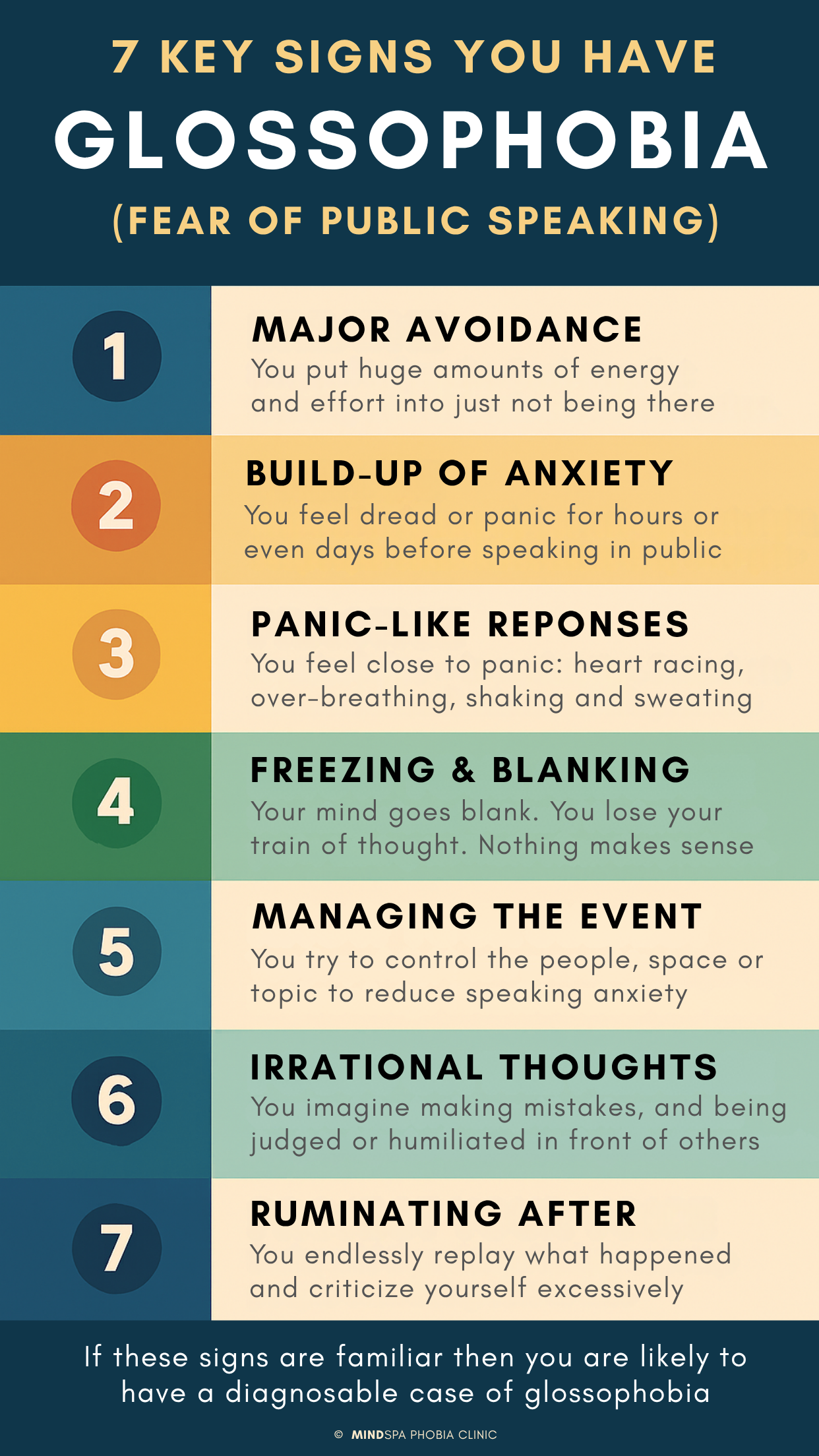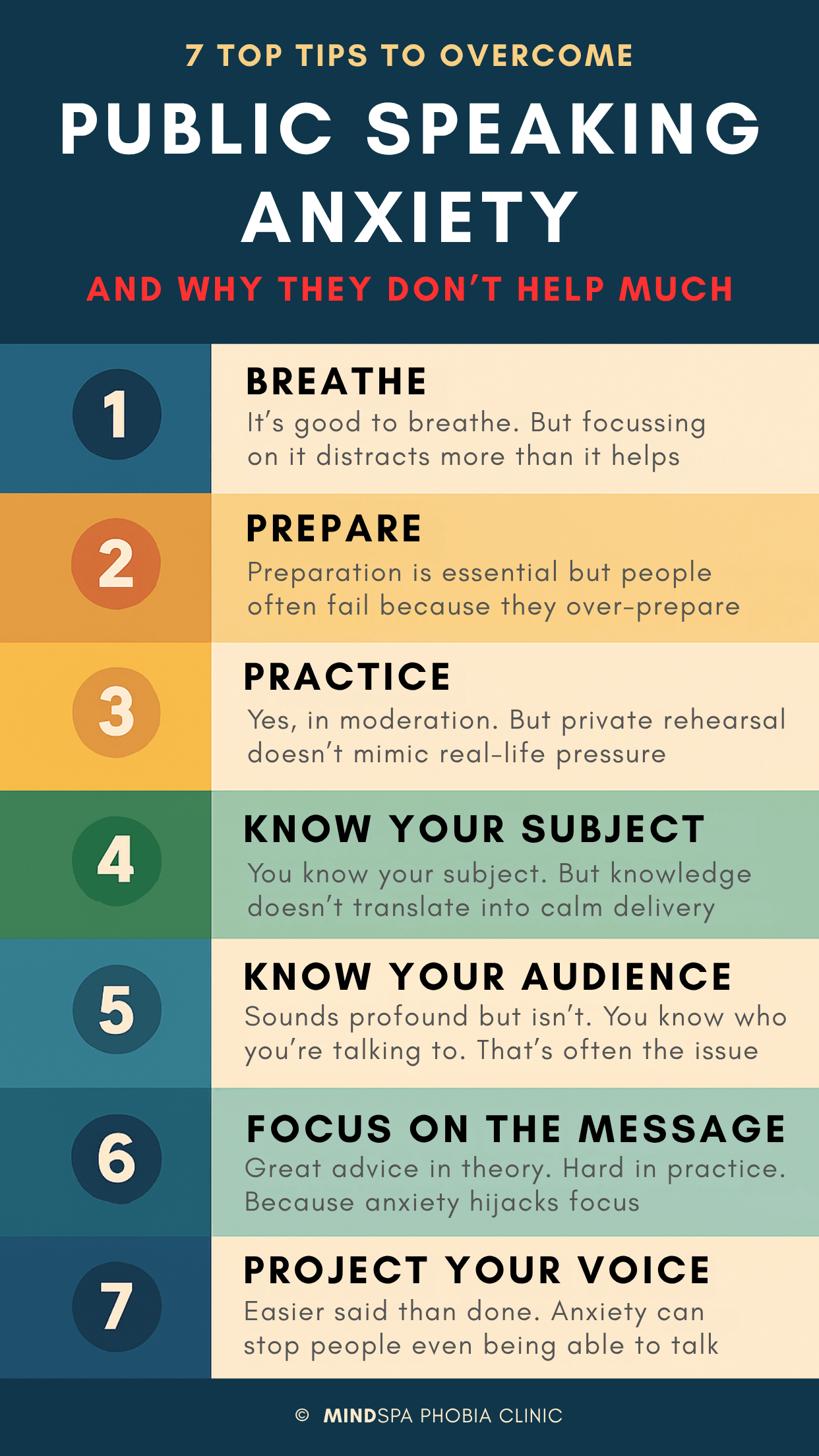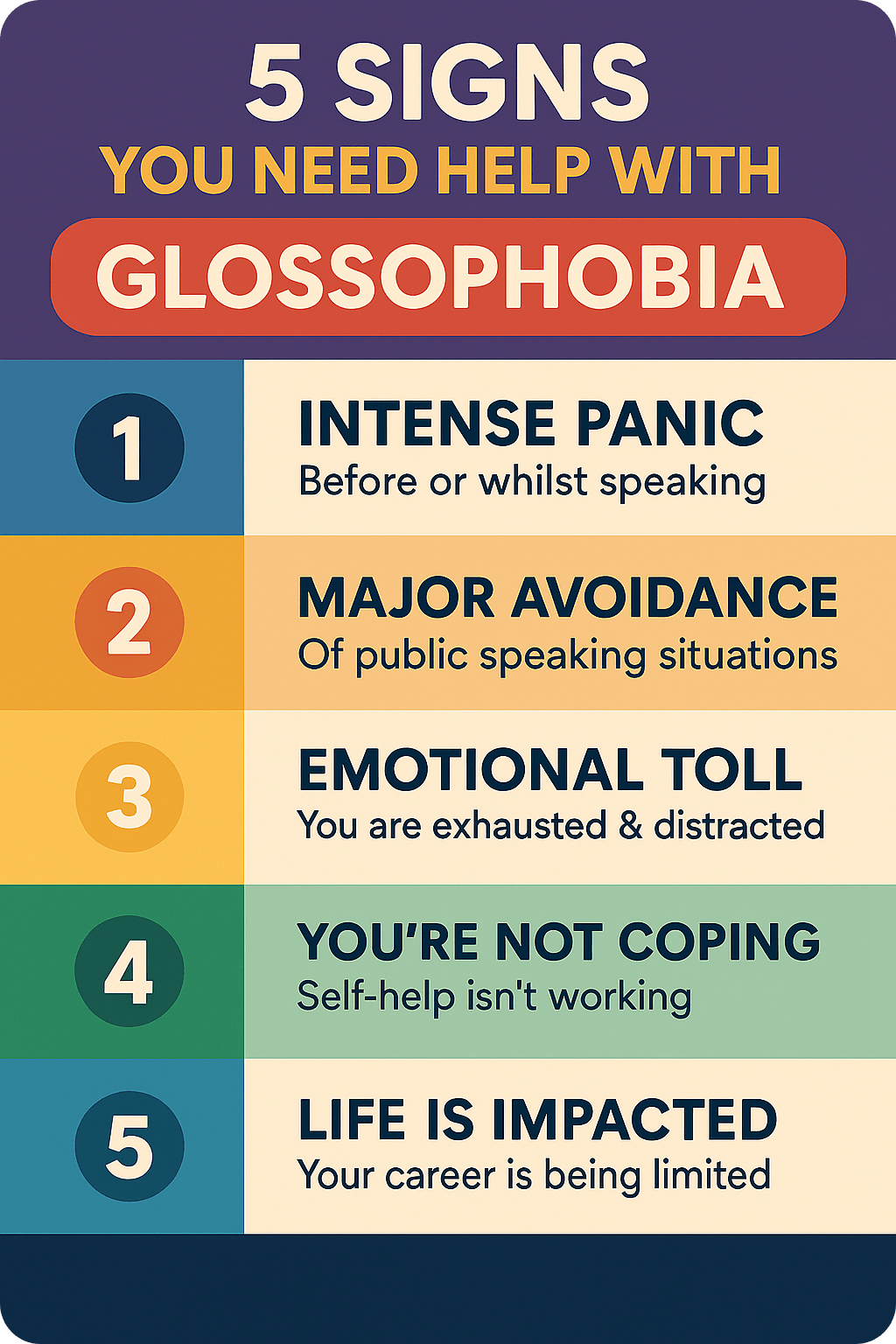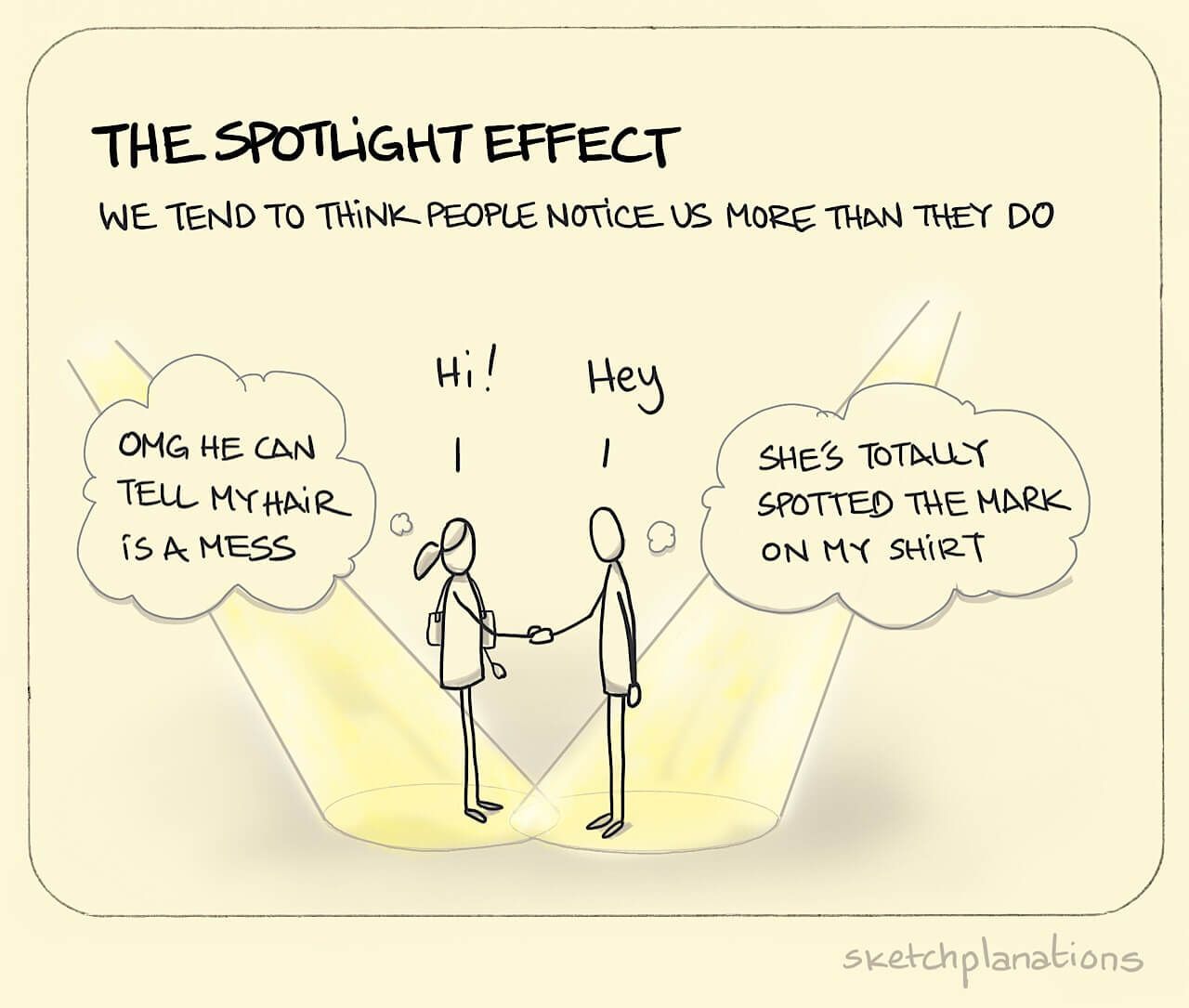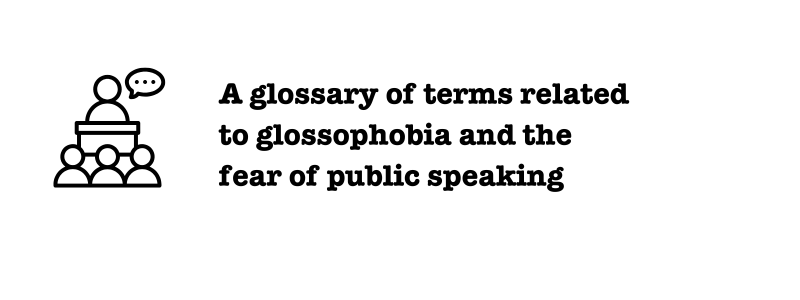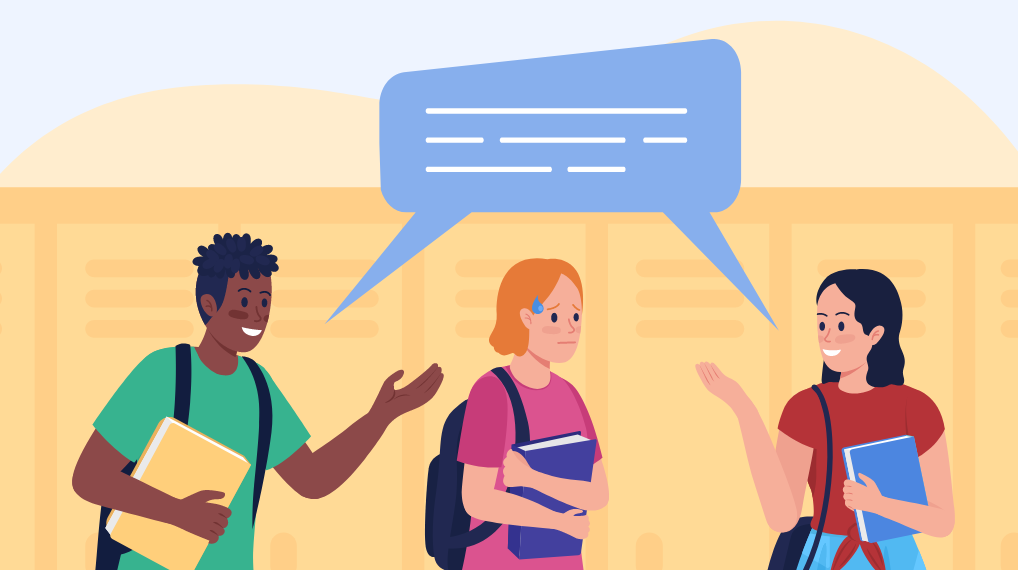How do people with glossophobia limit their fear and anxiety around speaking in public?

Avoidance is a key ingredient in any phobia. It’s a behaviour pattern where people keep away from situations that trigger their anxiety and fear in order to escape the panic and terror that will result. It’s a very simple and effective survival response.
How Avoidance Reinforces Glossophobia and Limits Career Growth
With glossophobia, or the fear of public speaking, avoiding speeches, presentations or meetings may temporarily relieve anxiety but it reinforces the fear over time because whenever the situation is avoided, the sense of relief strengthens the idea that public speaking is terrifying and something they shouldn’t be doing. This feeling of relief is the brain releasing dopamine – the “feel good” neurotransmitter – to reward the “survival” of the imagined threat and reinforce the “good” avoidant behaviour.
In the workplace, avoidance can be career-limiting as sufferers avoid opportunities to advance into roles that require more public speaking.
Glossophobia: 3 Types of Avoidance Behaviours and How They Manifest
Glossophobia elicits three types of avoidance behaviour:
Complete Avoidance: Just not being there to do the speech, deliver the presentation, talk in a meeting or perform on the stage. This may involve feigning illness, booking strategic holidays or inventing some crisis that requires them to be elsewhere. Some people choose a career path that just doesn’t involve speaking in public. The latter option is becoming harder as most jobs now involve some element of speaking in public.
Partial Avoidance: Manipulating people or managing the speaking situation to reduce their fear and anxiety to make it more bearable. This may include delivering a very short speech, sitting rather than standing, getting others to speak alongside them, limiting the number of people or turning their camera off in an online meeting so others cannot see their discomfort.
Escape: Leaving the meeting, conference or event early on some invented pretext like having to take an important call or attend to a family emergency. In online meetings rising panic may prompt some people to cut the call and pretend they have a bad connection.
Many people with glossophobia will use these avoidance and safety behaviours for years, putting huge amounts of energy and effort into not speaking in public. But often they come up against something they just can’t avoid - like a wedding speech, a eulogy or accepting an award – and reach out and get professional help.
Sources:
Healthline: Glossophobia: What It Is and How to Treat It
Bodie: Defining, explaining, and treating public speaking anxiety, Communication Education, 59(1), 70-105
Osmosis: Glossophobia: What Is It, Causes, Diagnosis, Treatment and More
British Psychological Society: Facing the Fear of Public Speaking

